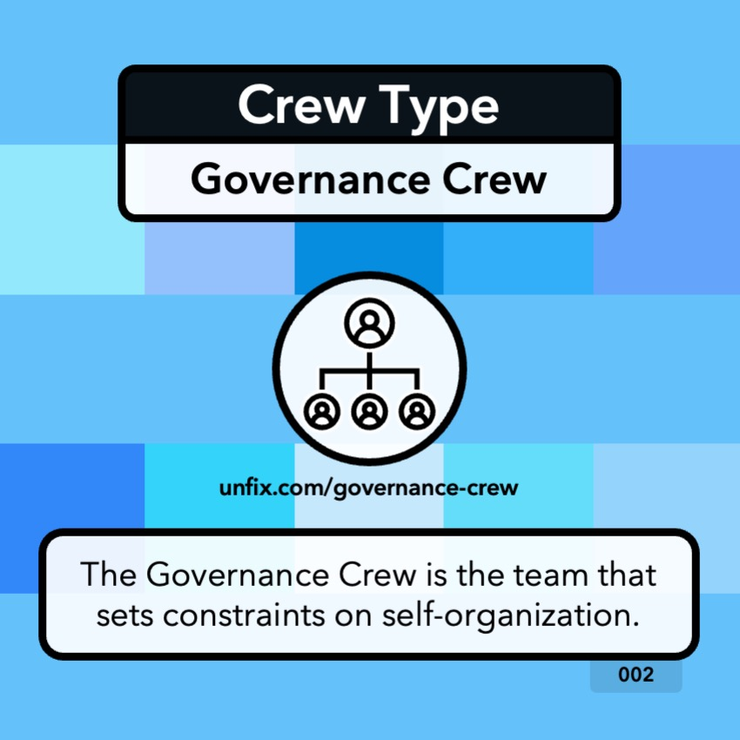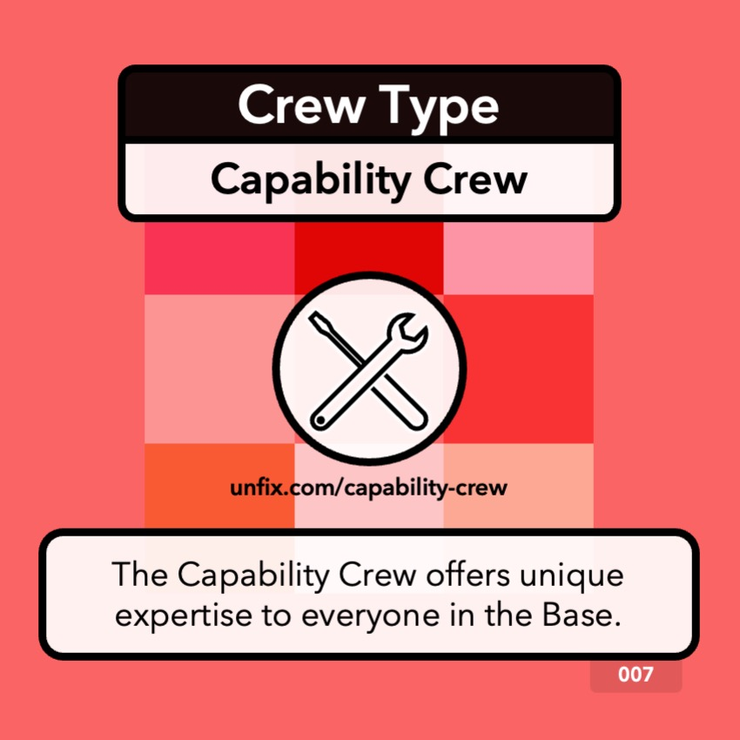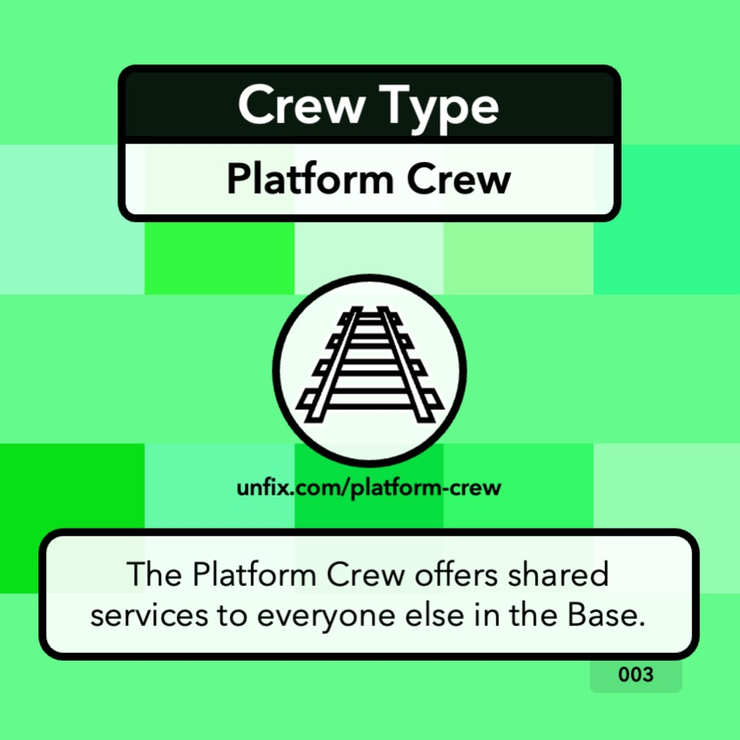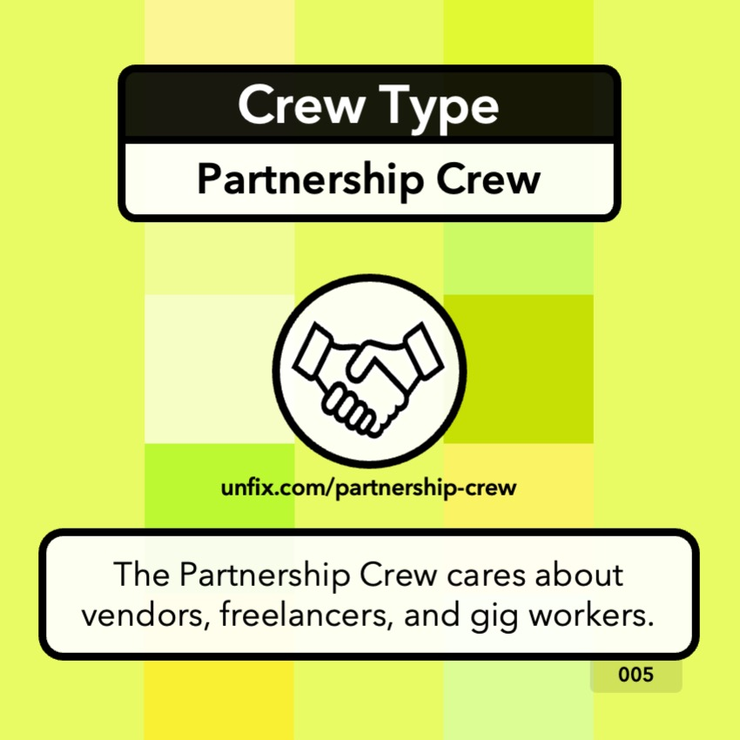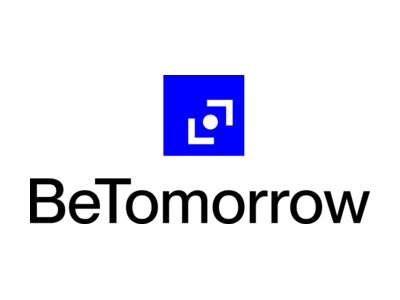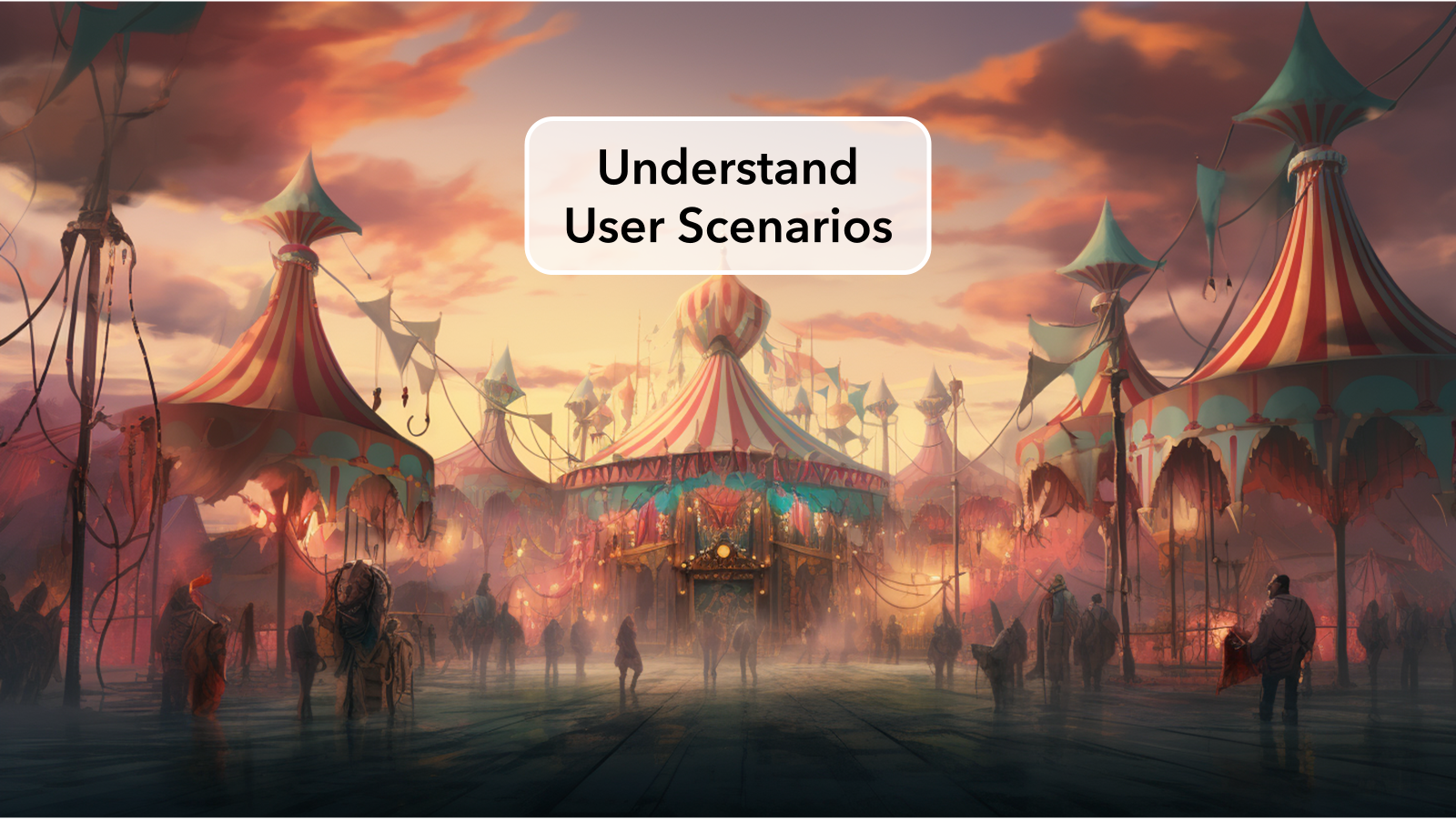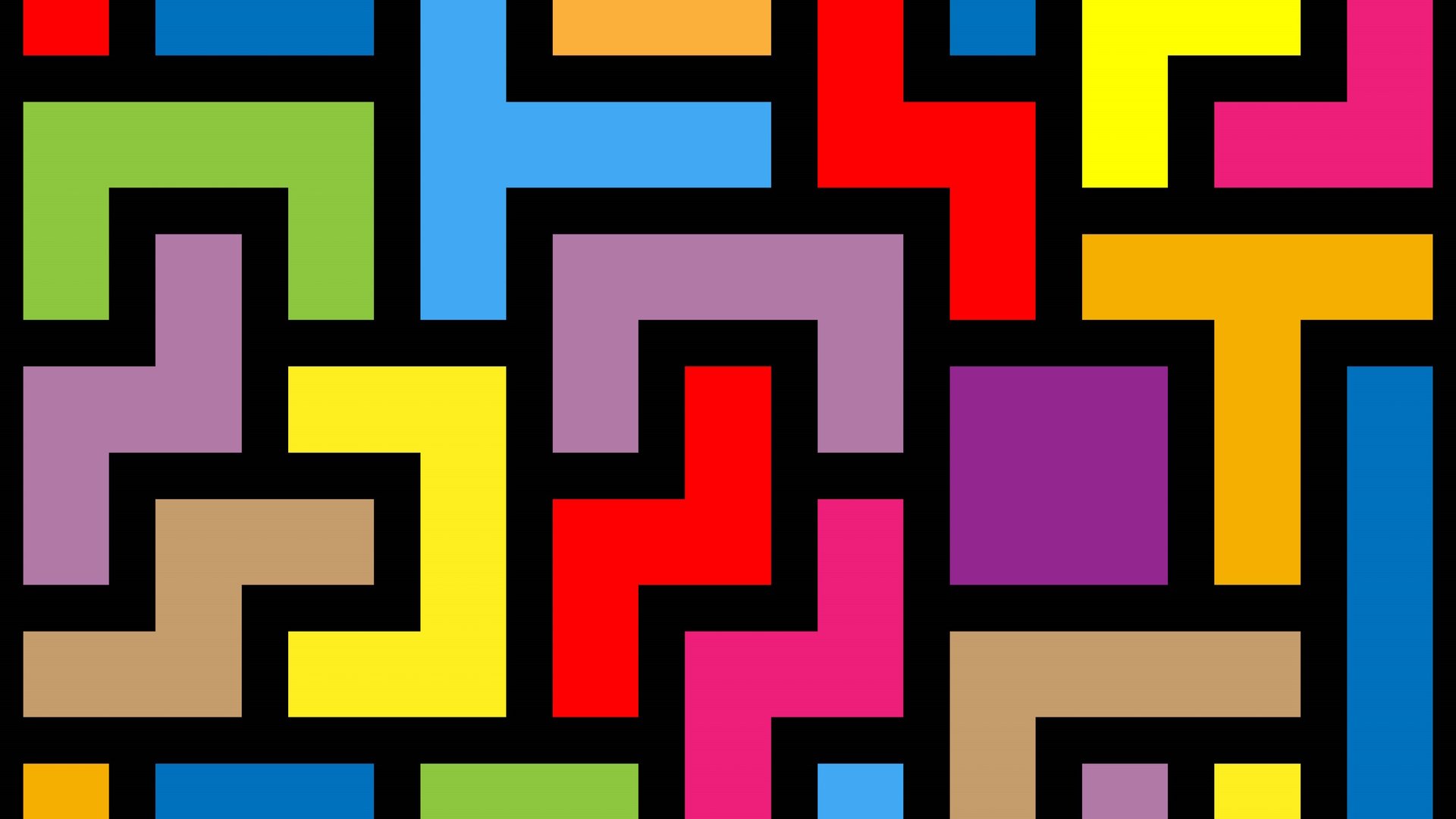
Crew Types
A Crew is a small team on a mission with a defined goal.
Purpose
To get things done, you need teams. The team is the most effective pattern in organization design. It is the essential building block for innovative organizations, and it comes in many forms. But in unFIX language, we use the word crew instead of team.
A film crew is on a mission to make a fantastic movie. A fire crew is on a mission to save a building from burning down. An airline crew is on a mission to safely bring passengers from one city to another.
Your best-performing Crews typically consist of between three to seven people. They are, to a large extent, autonomous and self-organizing. We say "to a large extent" because there are always some constraints on self-organization imposed by a Governance Crew (aka the management team). Crews might have the autonomy to decide on their own objectives, processes, roles, and membership. They can call themselves a Scrum team, Kanban team, feature team, or agile squad. It doesn't matter. They're a time-bound team on a mission to get something done. They are a Crew.
Notes
We prefer the word crew because it emphasizes that the team's work is collaborative, purposeful, and time-bound.
There is nothing wrong with words such as team or squad. If your organization prefers another term, by all means, use it. However, in ordinary language, words come with cultural baggage and personal assumptions. Out of the available alternatives, in terms of preconceptions, we believe crew is the least problematic.
In versatile organization design, Crews differ from ordinary teams in one crucial way: There is no line manager on a Crew! Nobody on the Crew decides on the others' wages or promotions. The film crew director is a leader, but she is not everyone's line manager. A surgeon in a hospital may have the lead during an operation, but he is not the line manager of his Crew. And the managers of an airline crew don't fly with them on the plane to check on what everyone is doing. Management happens in the Base, outside the Crews.
Some of the Crew types are inspired by the work by Matthew Skelton and Manuel Pais in their book Team Topologies: Organizing Business and Technology Teams for Fast Flow.
Rules / Constraints
The Crew is a small group of people who all know each other.
The Crew exists for (at least) the duration of a defined mission.
The Crew is, to a large extent, autonomous and self-organizing.
There is no manager on the Crew managing the other Crew members.


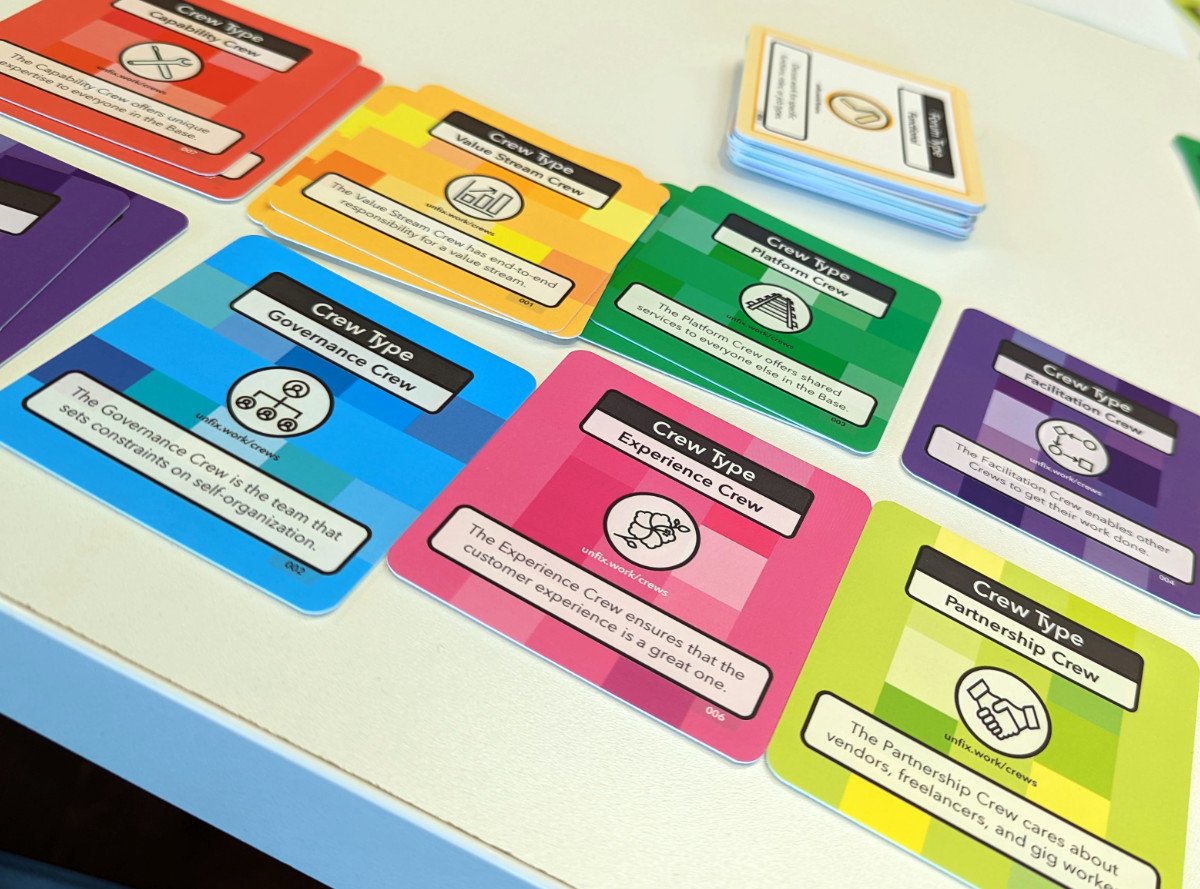

“Cooperation is the thorough conviction that nobody can get there unless everybody gets there.”
(Source: Virginia Burden)



